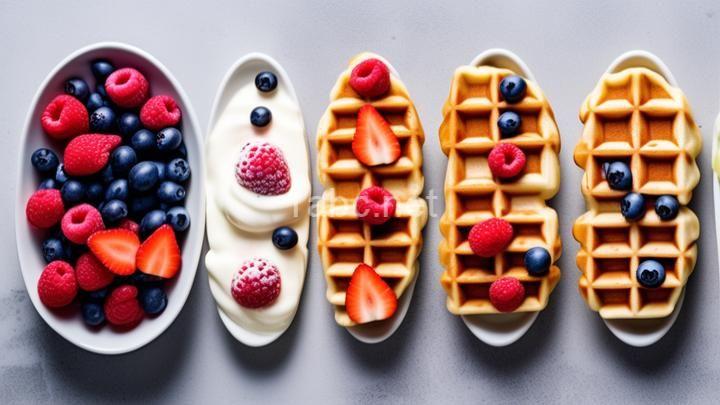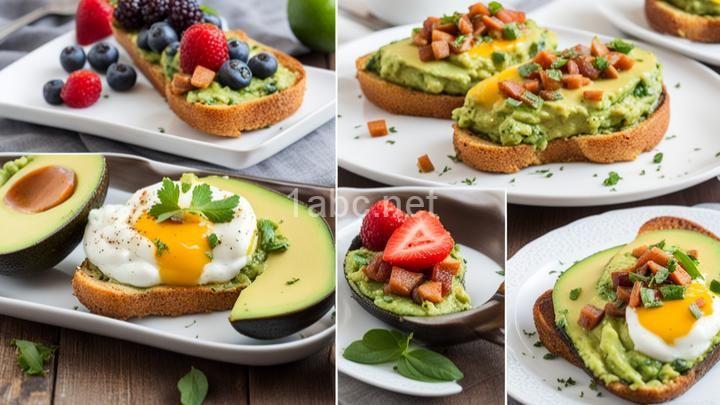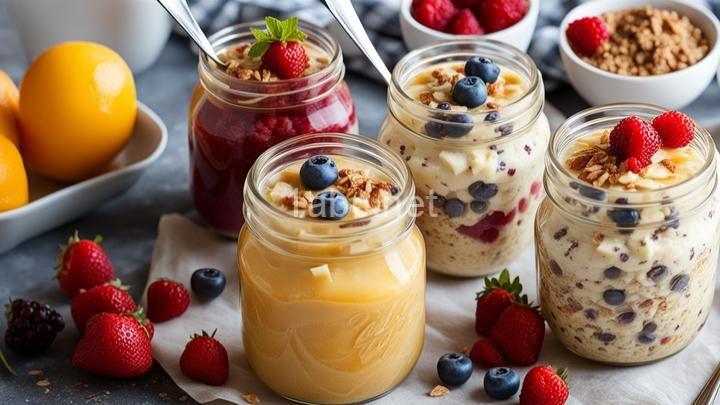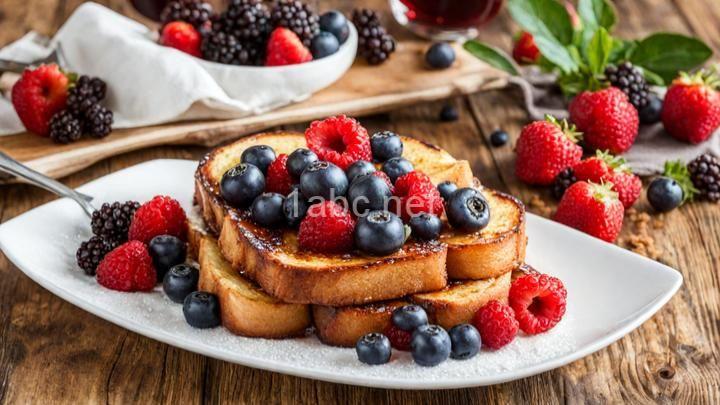Morning Mastery: Tips and Tricks for Perfecting Your Omelette and Frittata Skills
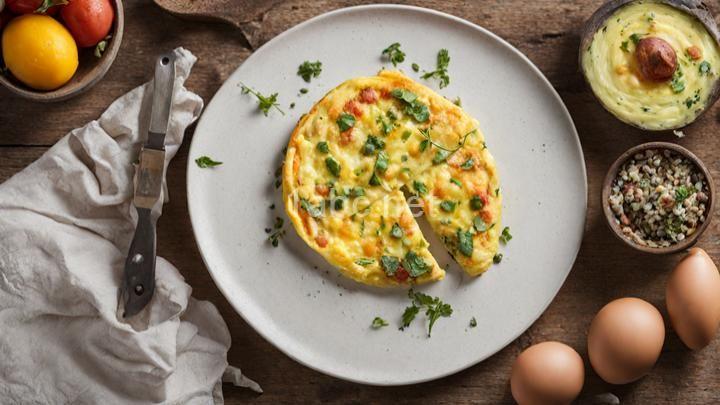
Introduction:
Welcome to "Morning Mastery: Tips and Tricks for Perfecting Your Omelette and Frittata Skills." If you're a breakfast enthusiast like me, you probably enjoy starting your day with a delicious omelette or frittata. These classic dishes are not only versatile but also incredibly satisfying. In this blog post, I am excited to share some helpful tips and tricks that will elevate your skills in making these breakfast favorites to a whole new level.
I. Understanding the Basics
A. What is an Omelette?
An omelette is a traditional breakfast dish made from beaten eggs that are cooked until set and folded over a filling. The main ingredients for an omelette include eggs, salt, pepper, and butter. While the classic omelette is simple and usually filled with cheese, you can experiment with various fillings like vegetables, meats, or herbs to personalize your creation.
B. What is a Frittata?
A frittata is similar to an omelette, but there are a few notable differences. Unlike an omelette, a frittata is not folded over a filling. Instead, all the ingredients, including the eggs and fillings, are mixed together and cooked as a whole in a skillet. Frittatas are often finished in the oven to ensure that the eggs are fully cooked and the top is slightly browned. This dish provides a great opportunity to showcase a variety of ingredients, making it perfect for using up leftovers or creating a unique flavor combination.
II. Essential Tools and Ingredients
A. Tools You'll Need
To perfect your omelette and frittata skills, there are a few essential tools you'll need. These include a non-stick skillet, a whisk, a spatula or a heatproof rubber spatula, a mixing bowl, and an oven-safe skillet if you plan to make a frittata that requires oven finishing.
B. Ingredients for Basic Omelettes and Frittatas
The basic ingredients for omelettes and frittatas are quite similar but can be tailored to your liking. For both dishes, you'll need eggs, salt, pepper, and butter. Additionally, you can include ingredients such as vegetables (bell peppers, onions, mushrooms, etc.), cheese (cheddar, feta, goat cheese, etc.), herbs (chives, parsley, basil, etc.), and even cooked meats like ham or bacon.
III. Perfecting Your Technique: Omelettes
A. Step-by-Step Guide to Making an Omelette
- Preparing the Eggs: Crack the eggs into a bowl and whisk them until well combined. Season with salt and pepper to taste.
- Heating the Skillet: Heat a non-stick skillet over medium heat. Add a small knob of butter and allow it to melt, coating the bottom of the pan evenly.
- Cooking the Omelette: Pour the beaten eggs into the skillet. Tilt the pan to spread the eggs evenly. As the eggs start to set, gently lift the edges with a spatula, allowing the uncooked eggs to flow underneath.
- Adding Fillings (Optional): Once the omelette is mostly set but still slightly runny on top, add your desired fillings to one half of the omelette.
- Folding and Serving: Using the spatula, fold the other half of the omelette over the filling. Slide the omelette onto a plate, garnish with fresh herbs if desired, and serve immediately.
IV. Perfecting Your Technique: Frittatas
A. Step-by-Step Guide to Making a Frittata
- Preparing the Eggs Mixture: In a mixing bowl, whisk the eggs until well beaten. Season with salt and pepper.
- Sautéing Vegetables (Optional): If you are using vegetables as fillings, sauté them in a separate skillet until softened and slightly caramelized. Allow them to cool before adding them to the egg mixture.
- Pouring the Mixture into the Skillet: Heat a non-stick skillet over medium heat. Add a small knob of butter and let it melt, coating the bottom of the pan. Pour the egg mixture into the skillet, spreading it evenly.
- Cooking on Stovetop & Finishing in Oven (or Stovetop only): Cook the frittata on the stovetop over medium heat until the edges start to set. At this point, you can either transfer the skillet to a preheated oven and bake at 350°F (175°C) until the top is set and slightly browned, or continue cooking on the stovetop by reducing the heat and covering the skillet with a lid until the top is fully cooked.
- Serving: Once cooked, remove the skillet from the heat and let the frittata rest for a few minutes before transferring it to a serving plate. Garnish with fresh herbs and serve warm or at room temperature.
V. Tips and Tricks for Flawless Results
A. Choosing the Right Pan Size: It's important to use the right pan size to ensure even cooking and a desirable thickness for your omelettes and frittatas. For a two-egg omelette, an 8-inch skillet works well, while a 10-inch skillet is suitable for a three-egg omelette or a frittata that serves four to six people.
B. Beating Eggs Properly for Lightness and Fluffiness: To achieve a light and fluffy texture, whisk your eggs vigorously until they are well combined and frothy. This allows air to be incorporated into the eggs, resulting in a fluffier end product.
C. Controlling Heat and Cooking Time: Cooking your omelettes and frittatas over medium heat ensures even cooking without burning the bottom. Additionally, pay attention to the cooking time. Overcooking can result in a dry and rubbery texture, so it's best to remove the pan from the heat just before the eggs are fully set as residual heat will continue cooking them.
D. Adding Flavorful Fillings and Toppings: Experiment with different fillings and toppings to enhance the flavor of your omelettes and frittatas. Consider using ingredients like sautéed mushrooms, caramelized onions, roasted red peppers, fresh herbs, or crumbled feta cheese. The possibilities are endless!
E. Achieving the Perfect Texture: For an omelette, aim for a tender and slightly runny interior. The eggs should be cooked but still retain some moisture. Frittatas, on the other hand, should have a custard-like texture that is fully cooked but not dry.
VI. Frequently Asked Questions (FAQs)
Q: Can I make omelettes and frittatas without a non-stick skillet?
A: While a non-stick skillet is recommended for easy flipping and releasing, you can use a well-seasoned cast-iron or stainless-steel skillet. Just make sure to use enough butter or oil to prevent sticking.
Q: Can I make omelettes and frittatas ahead of time?
A: Omelettes are best enjoyed immediately after cooking. However, frittatas can be made ahead of time and stored in the refrigerator. They can be served chilled, at room temperature, or reheated in the oven or microwave.
Q: Can I substitute egg whites for whole eggs?
A: Yes, you can use egg whites or a combination of whole eggs and egg whites in your omelettes and frittatas. However, note that using only egg whites may result in a less rich and flavorful end product.
Conclusion:
Congratulations! You've reached the end of "Morning Mastery: Tips and Tricks for Perfecting Your Omelette and Frittata Skills." By understanding the basics, gathering the necessary tools and ingredients, and following our step-by-step guides, you are now equipped to create delicious and impressive omelettes and frittatas. Remember to experiment with flavors, control the heat and cooking time, and have fun in the kitchen. With these tips and tricks, you'll be able to impress your family and friends with flawless breakfast creations. Happy cooking!
FREQUENTLY ASKED QUESTIONS
What is Morning Mastery?
Morning Mastery refers to the practice of starting your day with intention, focus, and positive routines to set the tone for the rest of the day. It involves creating a morning routine that incorporates activities such as meditation, exercise, journaling, reading, or any other practices that promote personal growth and well-being. The goal of Morning Mastery is to optimize productivity, enhance mental clarity, and cultivate a positive mindset for a successful and fulfilling day ahead.
How can Morning Mastery help me improve my omelette and frittata skills?
Morning Mastery can help you improve your omelette and frittata skills by providing step-by-step guidance and expert tips on preparing these dishes. It offers a collection of delicious recipes with detailed instructions, ensuring that you understand each stage of the cooking process. Additionally, Morning Mastery provides information on ingredient selection, proper seasoning, and cooking techniques specific to omelettes and frittatas. By following the guidance and practicing regularly, you can enhance your skills and create perfectly cooked omelettes and frittatas every time.
Who is Morning Mastery suitable for?
Morning Mastery is suitable for anyone who wants to improve their morning routine and start their day off on the right foot. It is especially beneficial for individuals who struggle with productivity, motivation, or stress in the mornings. Whether you are a student, professional, or stay-at-home parent, Morning Mastery can provide you with valuable tools and strategies to optimize your mornings and set yourself up for success.
Is Morning Mastery suitable for beginners?
Yes, Morning Mastery is suitable for beginners. The program provides a step-by-step guide to establishing a morning routine and developing positive habits. It is designed to be accessible for individuals who are just starting their personal development journey.
